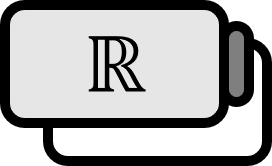Measuring Curves: A Guide to Length
Definition1
A curve $\gamma : [a,b] \to \mathbb{R}^{k}$ on $\mathbb{R}^{k}$ or simply on $[a,b]$ is called a continuous function.
If the curve $\gamma$ is a one-to-one function, it is called an arc.
If $\gamma (a)=\gamma (b)$, then $\gamma$ is called a closed curve.
Explanation
The important point is that the curve is defined as a mapping, not as a collection of points.
Now let’s define $\Lambda$ for the partition $P=\left\{ x_{0},\dots,x_{n} \right\}$ of the interval $[a,b]$ and the curve $\gamma$ as follows.
$$ \Lambda (P,\gamma) = \sum \limits _{i=1} ^{n} \left| \gamma (x_{i})-\gamma (x_{i-1}) \right| $$
The right-hand side’s $i$th term stands for the distance between two points $\gamma (x_{i-1}), \gamma (x_{i})$, meaning $\Lambda (P,\gamma)$ is equal to the length of the piecewise linear curve connecting the points $\gamma (x_{0}),\dots,\gamma (x_{n})$. As the partition is refined, $\Lambda (P,\gamma)$ will get closer and closer to the actual length of $\gamma$. In this sense, the length $\Lambda (\gamma)$ of the curve $\gamma$ is defined as follows.
$$ \Lambda (\gamma)=\sup \limits_{\forall P}\Lambda (P,\gamma) $$
If $\Lambda (\gamma) <\infty$, then $\gamma$ is called a rectifiable curve.
Walter Rudin, Principles of Mathmatical Analysis (3rd Edition, 1976), p136 ↩︎
